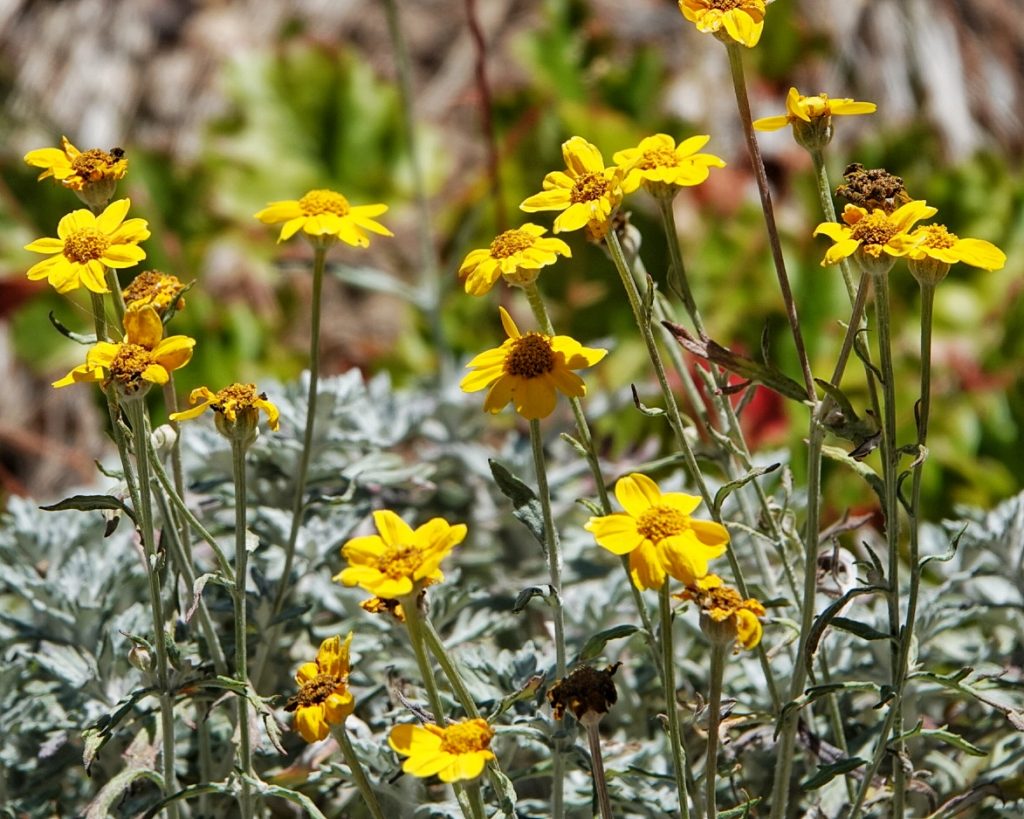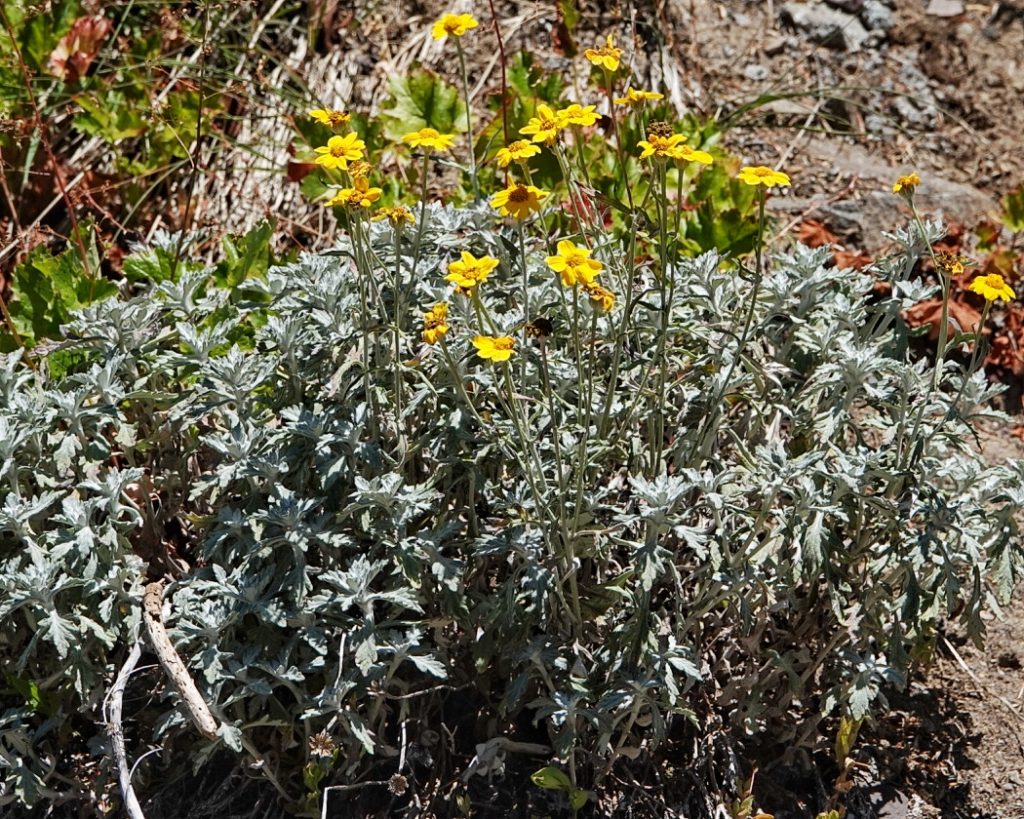
I have heard people refer to this member of the family Asteraceae as wooly sunflowers, but that is more properly a name for the species in Eriophyllum as a whole, and the accepted common name for this plant is Oregon sunshine. It is worthy of that name, lighting up otherwise barren areas of soil and rock, often growing in large patches that frequently have an intense amount of insect activity. I’ve found it on sea cliffs, mountain ridges, and out in the shrub steppe in the arid interior. And, despite its variability of form, it has a gestalt that is instantly recognizable from many paces away.
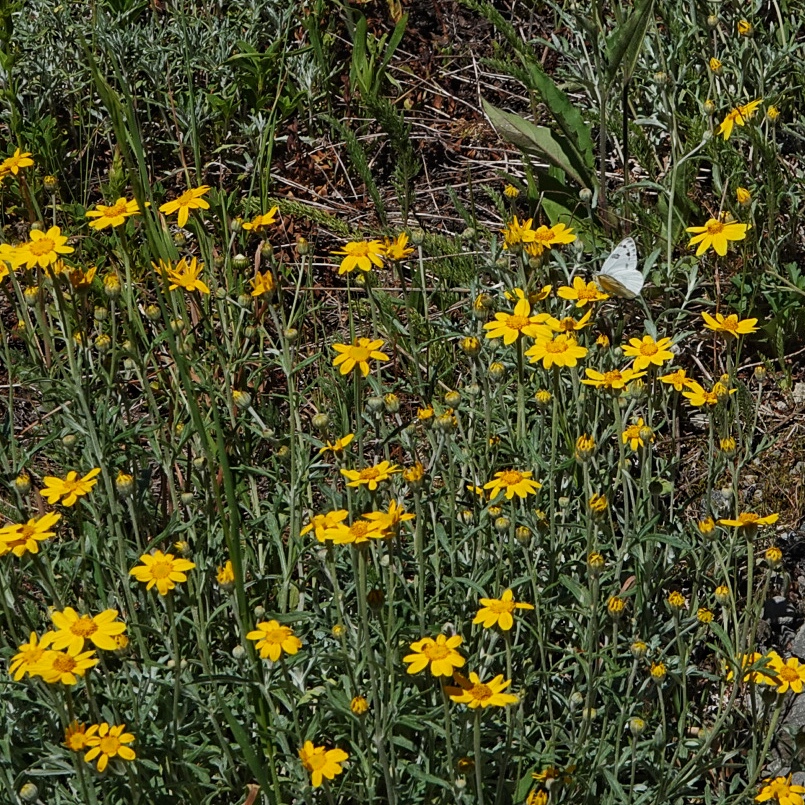
Oregon sunshine doesn’t seem to have been utilized as a food source by any indigenous peoples, but the leaves were rubbed on the face to prevent chapping, and were used analgesically as a bound poultice to mitigate body aches. And apparently the Chehalis tribe used the dried flowers as a love charm. There is no information on how it was prepared for this task, or on its efficacy. But I will say that a parcel of Eriophyllum lanatum, almost fluorescent under the summer sun and a deep blue sky, with insects of several different orders partaking of its bounty, inspires a sense of joy, wonder, and even adoration in me. So who am I to say it wouldn’t help one find the love of their life?
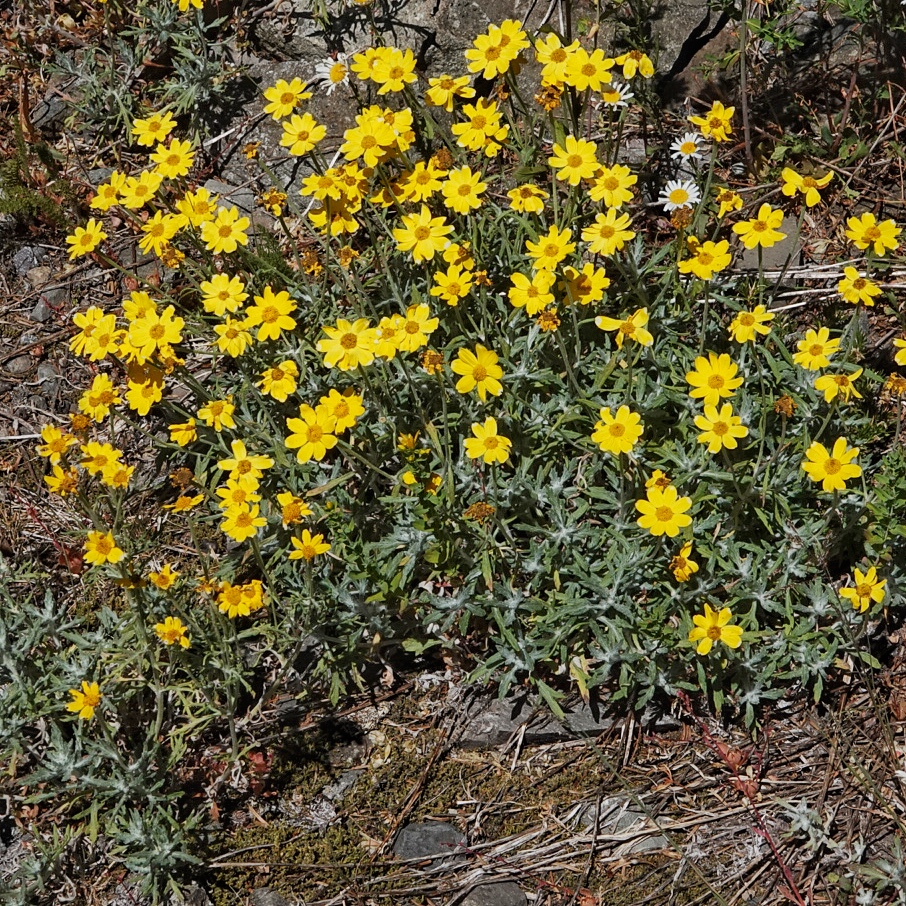
Description-Perennial; low mounds of wooly grey leaves with erect stalks of bright yellow flowers; leaves highly variable, 15-70mm in length, ovate to lanceolate, lobed to deeply dissected, always wooly, by sometimes more green than grey; flower stalks leafless; flowers up to 25mm across, usually 8-13 rays, but sometimes rayless.
Similar species-The flowers are superficially similar to many yellow Asteraceae, but nothing else in our region has the densely wooly and usually greyish leaves of this species.
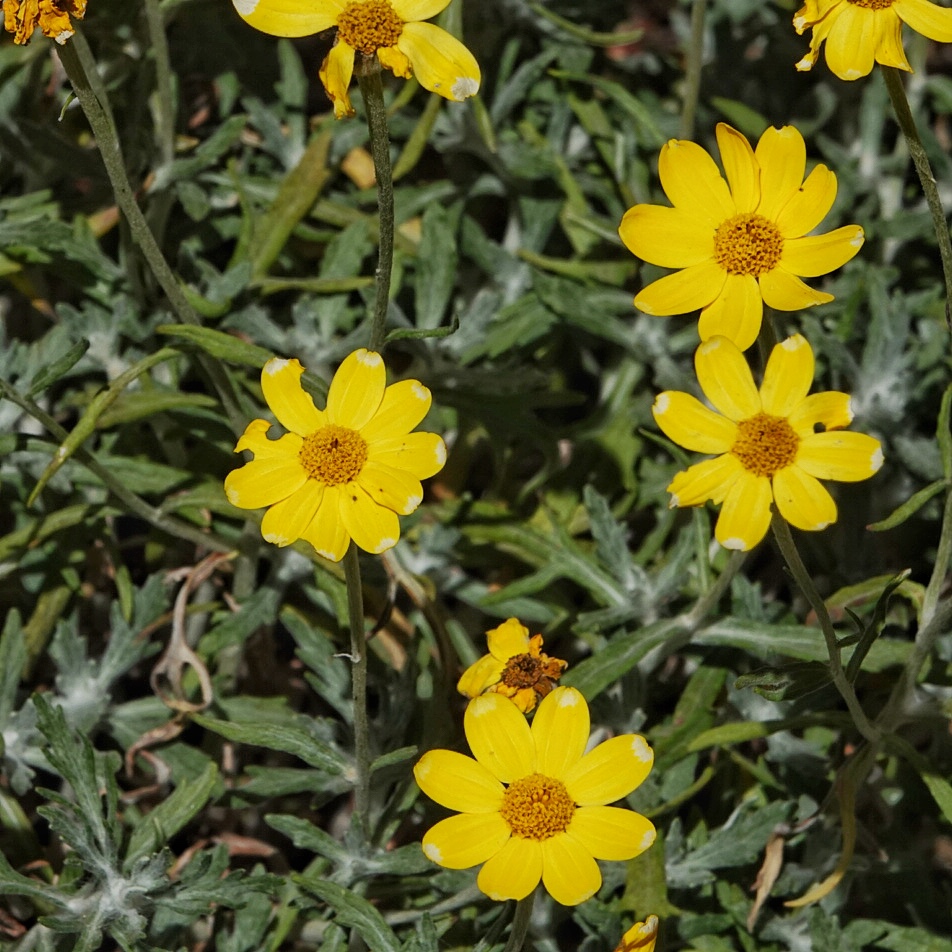
Habitat-Open areas, often rocky ones, from sea level to subalpine.
Range-Western North American native; region wide in appropriate habitat
Reproductive timing-Blooms May to August
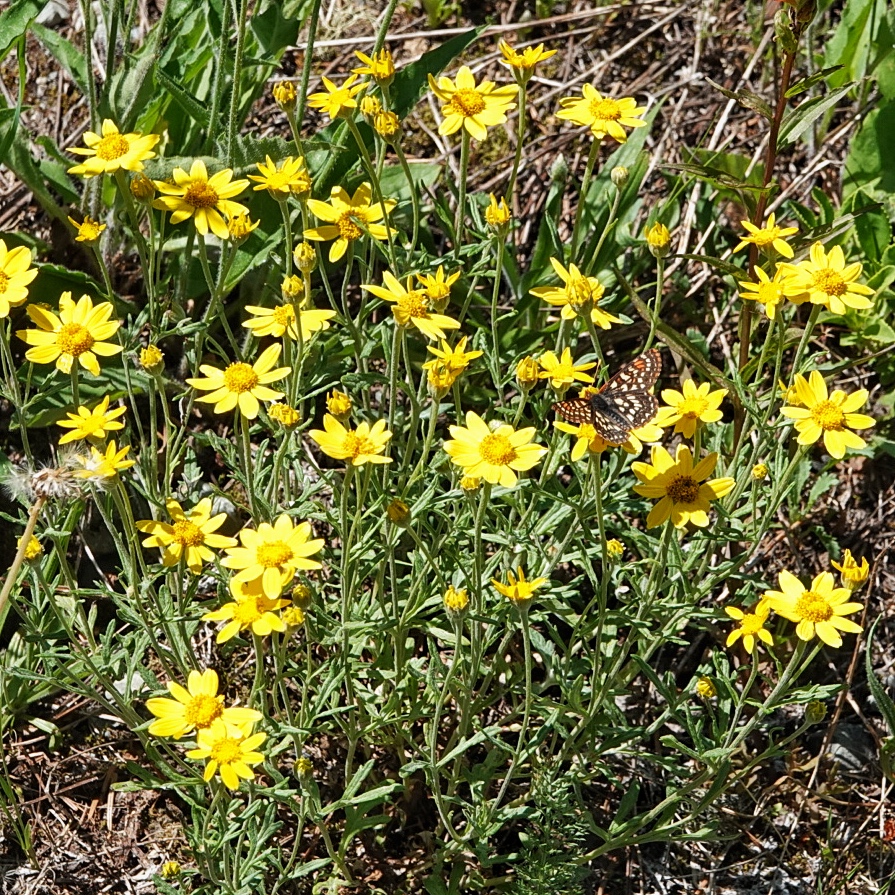
Eaten by-Utilized as a larval host by the Tortricid moths Eucosma maculatana and Sparganothis tunicana, the plume moths Amblyptilia pica, Platyptilia carduidactyla and P. williamsii, and the Pyralid moth Telethusia ovalis,as well as many others; if our experience on The Ridge is a valid indicator it is an important nectar and pollen source for a wide diversity of native bees and Syrphid flies, as well many different species of butterflies ; according to gardeners it is unpalatable to deer and rabbits, although apparently pocket gophers eat it.
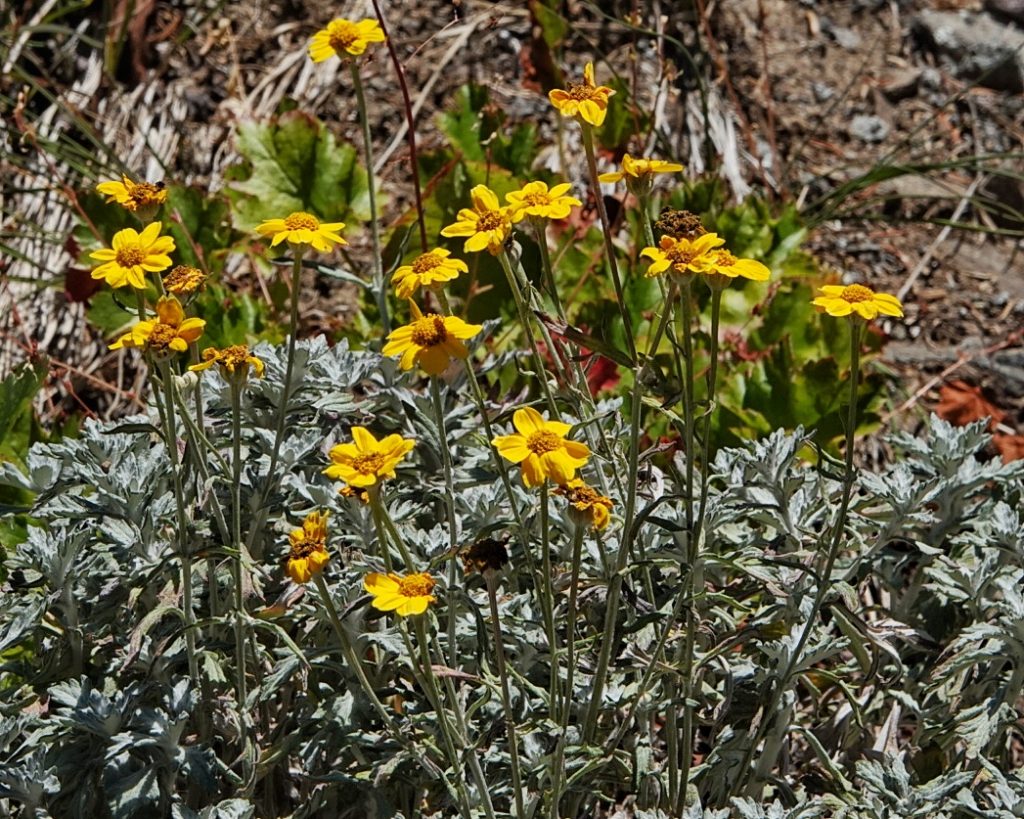
Etymology of names– Eriophyllum is from the Greek for ‘wooly leaves’, an apt description for this genus. The specific epithet lanatum is from the Latin for ‘wooly’, because even in a wooly-leaved genus these plants have very wooly leaves.
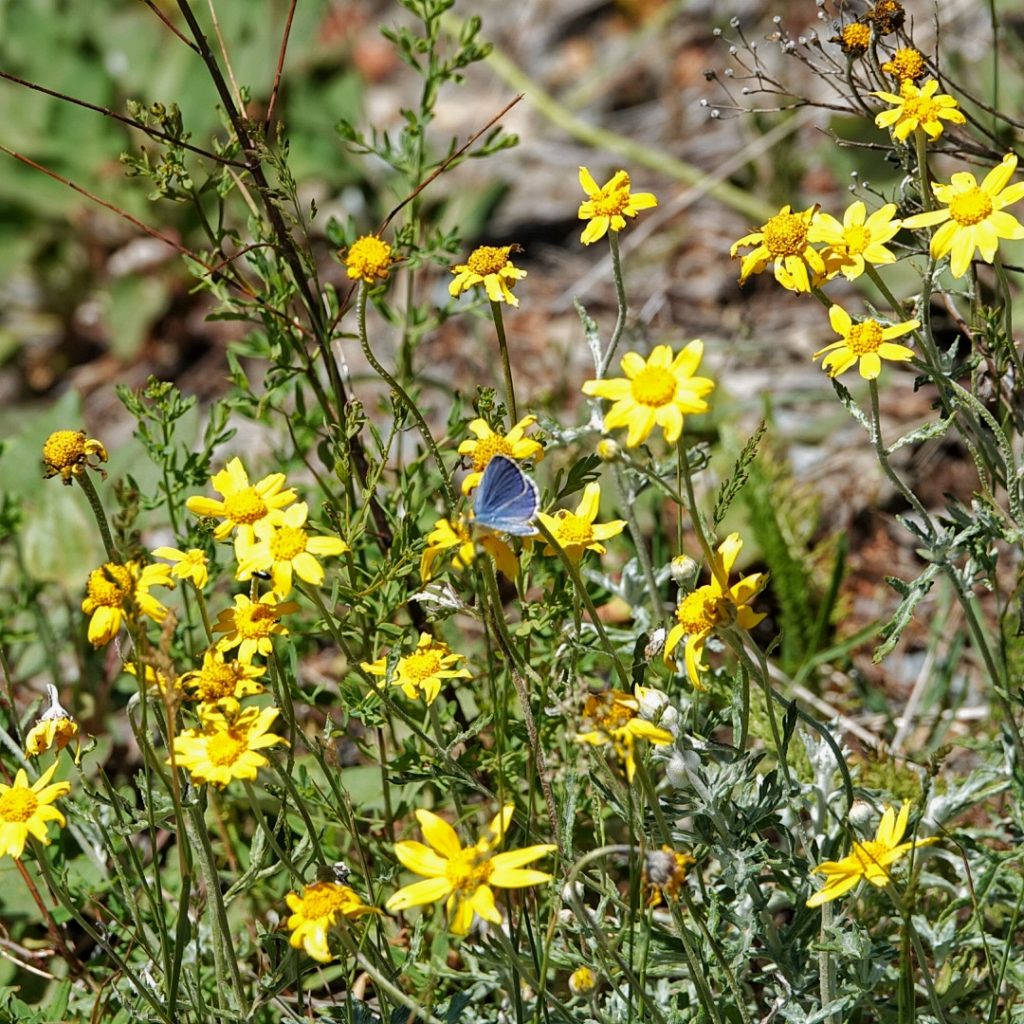
OregonFlora Eriophyllum lanatum
http://biology.burke.washington.edu/herbarium/imagecollection/taxon.php?Taxon=Eriophyllum%20lanatum
BRIT – Native American Ethnobotany Database
https://extension.oregonstate.edu/gardening/pollinators/profile-oregon-sunshine-eriophyllum-lanatum
http://www.efloras.org/florataxon.aspx?flora_id=1&taxon_id=250066710
